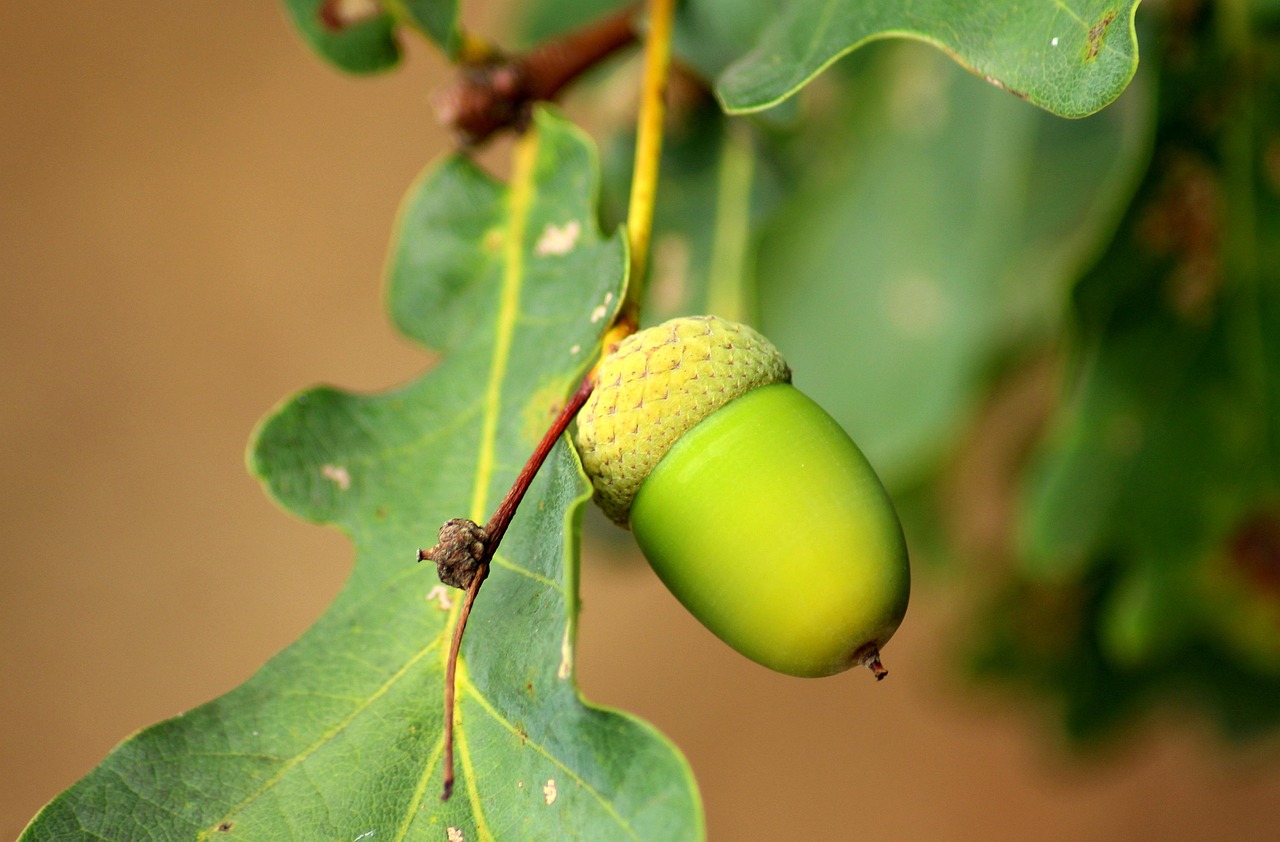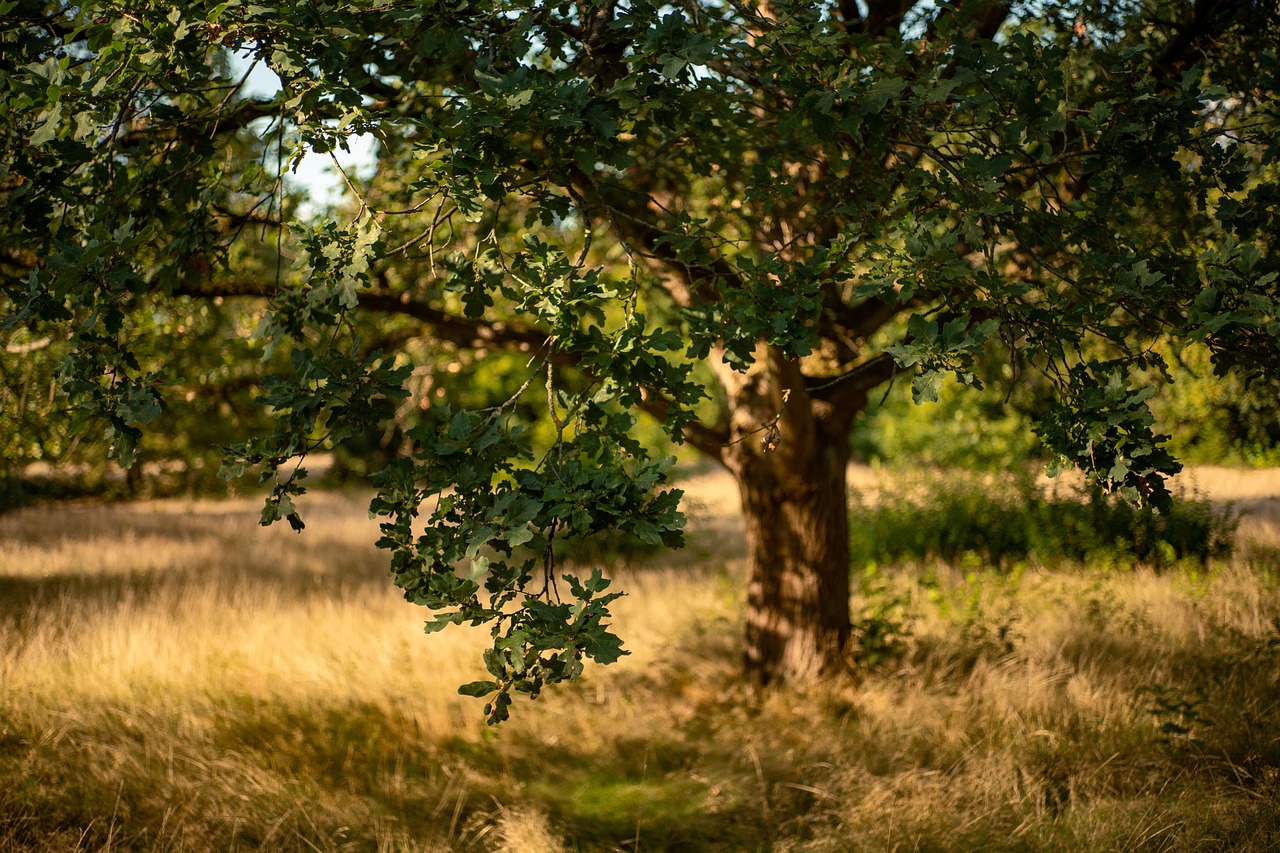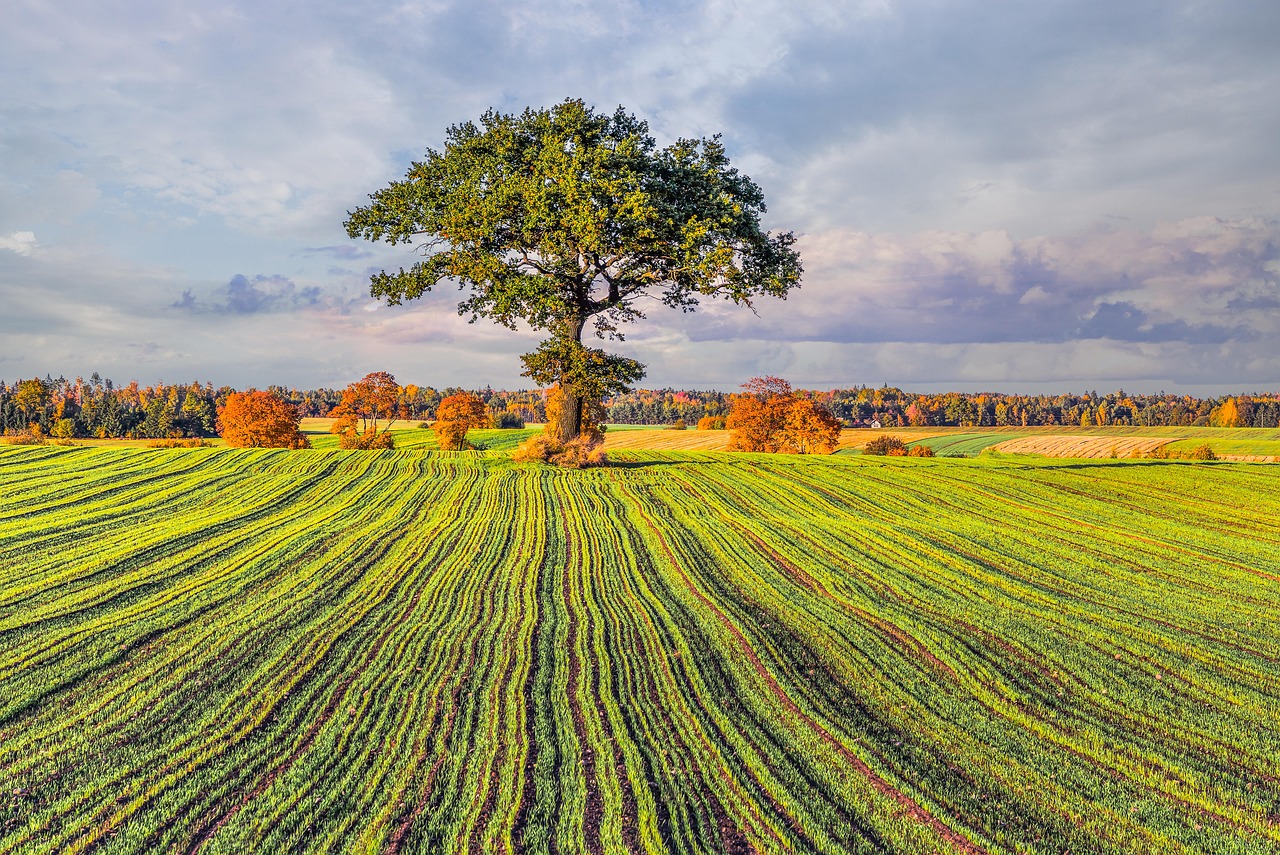Nuttall Oak trees have a moderate to fast growth rate, typically growing 1 to 2 feet per year. This makes them an excellent choice for quick forest growth and reforestation projects.
The Nuttall Oak (Quercus nuttallii) is a deciduous tree native to the southeastern United States. It is particularly well-suited for wetland areas and can thrive in a variety of soil types. This species is prized not only for its rapid growth but also for its resilience and adaptability to different environmental conditions. As forests face challenges from climate change and urbanization, fast-growing trees like the Nuttall Oak play a crucial role in ecological restoration and forest management.

One of the notable features of the Nuttall Oak is its ability to grow in areas with fluctuating water levels. This adaptability allows it to flourish in flood-prone environments, making it a popular choice for wetland restoration projects. Additionally, its acorns provide vital food sources for wildlife, contributing to biodiversity in forested areas.
Growth Rate Characteristics
The growth rate of the Nuttall Oak can be influenced by various factors, including soil quality, water availability, and sunlight exposure. Generally, these trees are known to achieve significant height within a short period. Here are some key characteristics of their growth:
| Factor | Impact on Growth Rate |
|---|---|
| Soil Quality | Well-drained, rich soil promotes faster growth. |
| Water Availability | Consistent moisture helps sustain rapid growth. |
| Sunlight Exposure | Adequate sunlight enhances photosynthesis and growth. |
In optimal conditions, Nuttall Oaks can reach heights of 50 to 70 feet at maturity. Their trunk diameter can range from 1 to 3 feet. The combination of height and trunk size makes them suitable for use in timber production and landscaping. Moreover, their dense canopy provides substantial shade, which can benefit understory plants and help regulate soil temperature.

The Nuttall Oak’s growth rate is not only beneficial for timber but also for ecological reasons. Fast-growing trees contribute to carbon sequestration, which is critical in addressing climate change. They absorb carbon dioxide from the atmosphere and store it in their biomass, helping to mitigate greenhouse gas emissions.
Another aspect worth noting is the Nuttall Oak’s resistance to pests and diseases. While no tree species is entirely free from threats, this oak variety generally exhibits a good level of resilience against common tree pests. This characteristic allows it to maintain its growth rate over time without significant interruptions.
In addition to its ecological contributions, the Nuttall Oak is relatively easy to care for, making it an ideal choice for homeowners and landscapers. It requires minimal maintenance once established, making it suitable for urban planting where space may be limited. Here are some tips for successful planting:

- Select a location with adequate sunlight.
- Ensure the soil is well-drained and rich in nutrients.
- Water regularly during the first few years after planting.
- Mulch around the base to retain moisture and suppress weeds.
Understanding the growth rate of Nuttall Oaks is essential for anyone involved in forestry or landscaping. By knowing how quickly these trees can grow, landowners can make informed decisions about forest management practices and reforestation efforts. With proper care and optimal conditions, Nuttall Oaks can thrive and contribute significantly to forest ecosystems.
Factors Influencing Nuttall Oak Growth Rate
Several factors can significantly influence the growth rate of Nuttall Oaks. Understanding these factors is crucial for ensuring optimal growth and development. The main aspects affecting growth include soil conditions, climate, water availability, and competition from other plants.
Soil Conditions
The quality of the soil plays a vital role in the growth of Nuttall Oaks. These trees prefer loamy, well-drained soils that are rich in organic matter. Heavy clay or sandy soils may hinder their growth. Key soil characteristics to consider include:

- pH Level: Nuttall Oaks thrive in slightly acidic to neutral soils (pH 6.0 to 7.0).
- Nutrient Content: Soils rich in nitrogen, phosphorus, and potassium promote healthy growth.
- Drainage: Well-drained soils prevent root rot and other moisture-related issues.
Climate Considerations
The climate where Nuttall Oaks are planted affects their growth and overall health. These trees flourish in temperate climates with distinct seasons. A few important climate factors include:
- Temperature: Nuttall Oaks grow best in USDA hardiness zones 6 to 9, where temperatures range from mild to warm.
- Humidity: Moderate humidity levels are beneficial, particularly in the summer months.
- Frost Dates: Late frosts can damage young leaves and buds, so planting in areas with predictable frost dates is advisable.
Water Availability
Water plays a critical role in the growth of Nuttall Oaks. While they are tolerant of wet conditions, consistent moisture is essential during their early years. Here are some water-related considerations:
- Irrigation: During dry spells, supplemental watering can promote faster growth.
- Flood Tolerance: Nuttall Oaks can withstand temporary flooding but should not be submerged for extended periods.
- Soil Moisture Monitoring: Regularly check soil moisture levels to ensure adequate hydration.
Pest and Disease Management
While Nuttall Oaks are relatively resistant to pests and diseases, they can still be affected by certain issues that may impact their growth rate. Effective management strategies can help maintain tree health. Common pests include:
- Oak Leaf Blister: This fungal disease causes leaves to develop blisters. Maintaining proper air circulation helps reduce its occurrence.
- Aphids: These small insects can sap nutrients from the tree. Natural predators like ladybugs can help control their populations.
- Gypsy Moths: Their caterpillars can defoliate trees. Regular monitoring and removal of visible caterpillars may be necessary.
Preventative Measures
To promote healthy growth and prevent pest-related problems, consider the following preventative measures:
- Regular Inspections: Check trees for signs of pests or disease early in the growing season.
- Cultural Practices: Implement good cultural practices such as appropriate spacing to improve airflow around trees.
- Organic Treatments: Use organic pesticides when necessary to minimize chemical exposure while managing pests.
Benefits of Nuttall Oak Trees in Forest Ecosystems
Nuttall Oaks provide numerous ecological benefits that extend beyond their growth rate. Their rapid growth helps create a diverse forest ecosystem. Some key advantages include:
- Biodiversity: These oaks support various wildlife species, providing habitat and food sources.
- Erosion Control: The deep root systems of Nuttall Oaks help stabilize soil, reducing erosion in vulnerable areas.
- Carbon Sequestration: Fast-growing trees absorb carbon dioxide efficiently, playing a role in combating climate change.
The contributions of Nuttall Oaks to forest ecosystems make them an invaluable species for conservation efforts. Their ability to adapt and thrive in various conditions ensures they remain a vital component of healthy forests.
Planting and Care for Nuttall Oaks
Successfully establishing Nuttall Oaks in a forest or landscape requires careful planning and attention to detail. From site selection to ongoing maintenance, each step is crucial for the long-term health and growth of these trees. Understanding the best practices for planting and care can lead to quicker establishment and robust growth.
Site Selection
Choosing the right location for planting Nuttall Oaks is one of the most critical steps. Ideal sites should have the following characteristics:
- Adequate Space: Ensure there is enough space for the tree to grow without obstruction from buildings or other trees.
- Sun Exposure: Select a site that receives full sun for most of the day, as this promotes healthy growth.
- Water Access: Consider locations near water sources or those that retain moisture without becoming overly saturated.
Planting Techniques
Once an appropriate site has been selected, the next step is planting. Follow these guidelines to ensure proper establishment:
- Prepare the Site: Clear the area of weeds, debris, and any competing vegetation.
- Dig the Hole: Create a hole that is twice as wide as the root ball and equal in depth. This allows for easy root expansion.
- Position the Tree: Place the Nuttall Oak in the center of the hole, ensuring that the root collar is level with the surrounding soil.
- Backfill and Water: Fill in around the roots with soil and water thoroughly to eliminate air pockets.
Mulching and Watering
Proper mulching and watering techniques contribute to the successful establishment of Nuttall Oaks. Here’s how to manage these aspects effectively:
- Mulching: Apply a layer of organic mulch around the base of the tree, extending outwards. This helps retain soil moisture, suppresses weeds, and regulates soil temperature.
- Watering Schedule: During the first growing season, water regularly to keep the soil moist but not saturated. Reduce watering frequency as the tree establishes itself.
Nuttall Oak Growth Stages
The growth of Nuttall Oaks can be divided into several key stages, each requiring different care strategies. Understanding these stages helps in providing appropriate support throughout the tree’s life cycle.
Seedling Stage
During the seedling stage, which lasts about one to two years, young Nuttall Oaks are particularly vulnerable. Care during this period is essential for survival:
- Protection from Pests: Monitor for pests and diseases that may affect young trees.
- Consistent Moisture: Keep soil consistently moist, especially during dry spells.
Juvenile Stage
The juvenile stage spans from three to ten years. Trees grow rapidly during this period, but competition may become a concern:
- Thinning Competition: If planted in groups, thin out weaker trees to reduce competition for resources.
- Nutrient Management: Fertilize with a balanced fertilizer to support vigorous growth.
Mature Stage
When Nuttall Oaks reach maturity at around 20 years, they require less intensive care but should still be monitored:
- Regular Inspections: Continue checking for signs of pests or disease that may arise as the tree ages.
- Pruning: Conduct light pruning to remove dead or crossing branches and maintain a healthy structure.
Common Challenges and Solutions
Nuttall Oaks may face various challenges throughout their growth journey. Recognizing these challenges early allows for timely interventions. Some common issues include:
| Challenge | Description | Solution |
|---|---|---|
| Pest Infestation | Pests like aphids can weaken trees by feeding on sap. | Use insecticidal soap or introduce natural predators. |
| Disease Outbreak | Diseases such as oak wilt can spread quickly among trees. | Avoid wounding trees and manage infected trees promptly. |
| Nutrient Deficiency | Poor growth may indicate a lack of essential nutrients. | Test soil and apply appropriate fertilizers as needed. |
Caring for Nuttall Oaks involves understanding their unique needs at different growth stages while being proactive in managing potential challenges. With proper planning and maintenance, these trees can thrive and contribute significantly to forest ecosystems.
Long-Term Benefits of Nuttall Oaks
Nuttall Oaks are not only valuable for their fast growth but also for the long-term benefits they provide to both the environment and human communities. As these trees mature, they create a range of positive impacts that enhance the overall health of forest ecosystems.
Habitat Creation
Mature Nuttall Oaks serve as critical habitats for various wildlife species. The dense foliage provides shelter for birds, mammals, and insects. Their acorns are a food source for numerous animals, including:
- Squirrels: These agile creatures rely on acorns during winter months.
- Deer: They forage on acorns and leaves, benefiting from the abundant food supply.
- Birds: Various bird species, such as woodpeckers and jays, feed on the insects and acorns found in oak trees.
Soil Health Improvement
Nuttall Oaks contribute to soil health through their leaf litter and root systems. The decomposition of fallen leaves enriches the soil with organic matter, promoting nutrient cycling. Additionally, their deep roots help prevent soil erosion and enhance water infiltration. This is particularly important in areas prone to flooding.
Climate Resilience
As climate change continues to affect ecosystems, Nuttall Oaks exhibit resilience due to their adaptability. They can thrive in a range of conditions, making them suitable for reforestation efforts in various environments. By planting Nuttall Oaks, landowners can contribute to creating climate-resilient landscapes that will endure changing weather patterns.
Economic Value
The economic value of Nuttall Oaks extends beyond their ecological benefits. These trees can provide significant returns on investment for landowners and communities:
- Lumber Production: Nuttall Oaks produce high-quality hardwood that is sought after in the timber market.
- Tourism and Recreation: Forests populated with healthy oak trees attract outdoor enthusiasts, promoting eco-tourism.
- Aesthetic Appeal: Their majestic appearance enhances property values and beautifies landscapes.
Cultural Significance
Nuttall Oaks carry cultural significance in various communities. They are often associated with strength and longevity, symbolizing resilience in landscapes where they grow. Many Native American tribes have historically used oak trees for food, medicine, and craft materials.
In educational settings, Nuttall Oaks can serve as living classrooms. Schools and nature centers can use these trees to teach students about ecology, biology, and environmental stewardship.
Final Thoughts
The Nuttall Oak stands out as a remarkable tree species due to its rapid growth rate and numerous ecological benefits. Its ability to thrive in diverse conditions makes it a valuable asset for reforestation projects and urban landscaping alike. With proper care and management, these trees can contribute significantly to forest ecosystems and create habitats for wildlife while improving soil health and aiding in climate resilience.
Moreover, the economic and cultural significance of Nuttall Oaks cannot be overlooked. They offer tangible benefits to landowners through lumber production and eco-tourism while enriching the cultural fabric of communities. As we face increasing environmental challenges, planting and nurturing Nuttall Oaks may play a crucial role in fostering sustainable landscapes that benefit both nature and humanity.
In summary, engaging with the growth and care of Nuttall Oaks not only supports individual landowners but also promotes a healthier planet overall. Their importance in forestry, ecology, and community life makes them essential trees for present and future generations.
